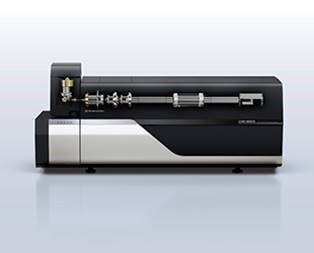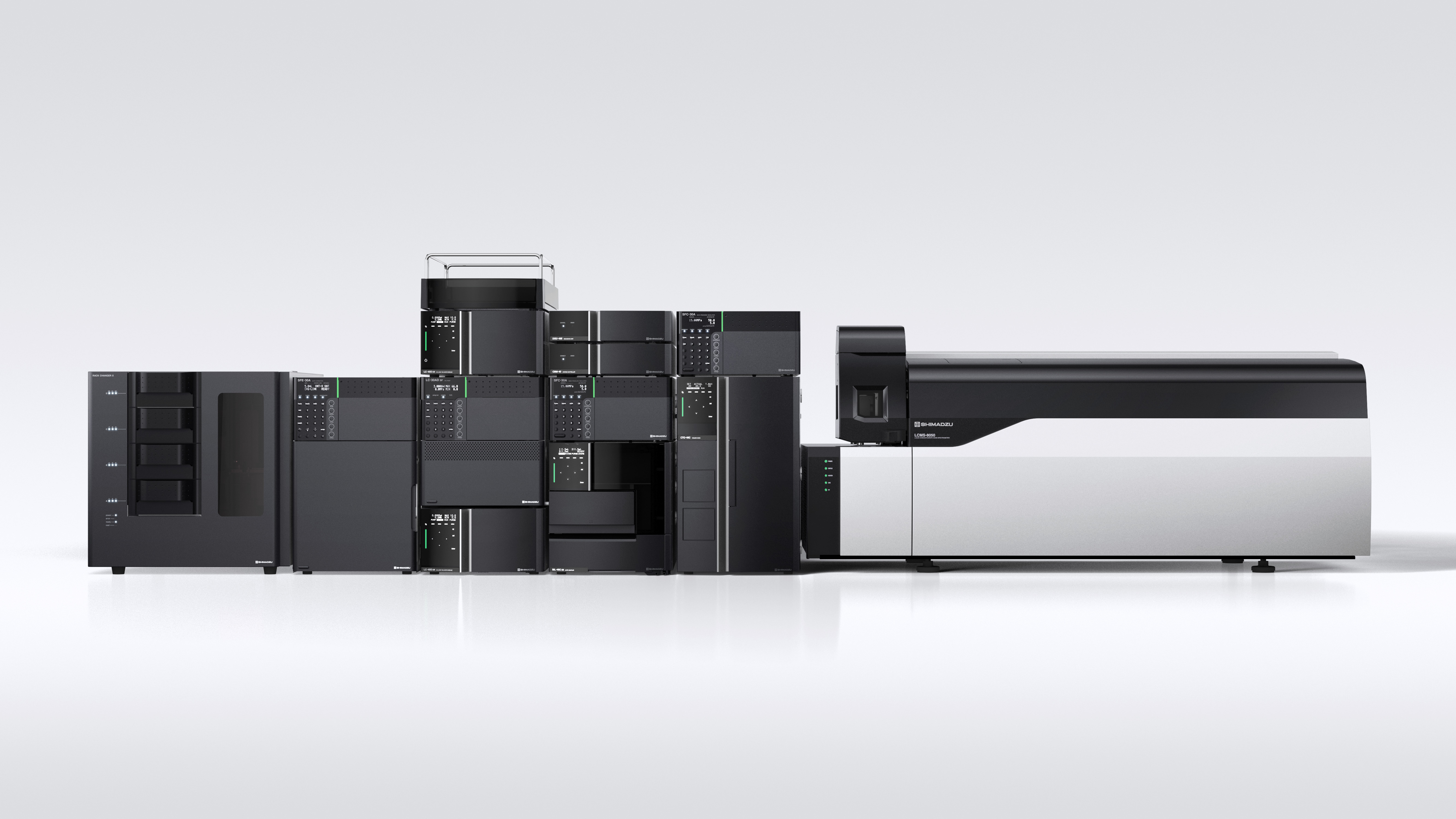RAFA 2022
10th International Symposium on Recent Advances in Food Analysis, RAFA 2022
06.09. - 09.09.2022
https://rafa2022.eu/
Meet Shimadzu at the RAFA 2022 in Prague
Please join us at our booth at RAFA 2022. The RAFA Symposium is well known as the world leading platform for the information exchange on recent advances in food analysis. RAFA 2022 will provide an overview of contemporary trends in analytical & bioanalytical Strategies in Food quality and Food safety, and discuss challenges and novel approaches in food and natural products analysis. Our product specialists are looking forward to welcome you and introduce the latest developments regarding food quality and food safety for your challenges in food testing. See you in Prague!
Vendor Session
"In Food we trust: Let´s talk Quality“
Wednesday, 07.09.2022, 07:45 – 08:30
We cordially invite you to our breakfast Seminar:
The quality of food characterized by gas chromatography
Erich Leitner, Head of the Institute of Analytical Chemistry and Food Chemistry, Graz University of Technology, 8010 Graz Austria, Stremayrgasse 9/2, erich.leitner@tugraz.at
Abstract:
It is written in the European General Food Law that “European citizens need to have access to safe and wholesome food of highest standards”. To ensure these requirements different principles and procedure are in action to monitor the whole production chain of food and feed production. It also ensures a high level of protection of human life and consumers interests in relations to food but also ensures the effective functioning of the internal market. Last but not least the sensory perspective (hedonic quality) is very important for the acceptance or rejection of a product by consumers. In this presentation I try to explain different aspects of food quality and safety and the requirements for analytical methods. Gas chromatography is a technique which can provide useful information on
- Characterization of the main ingredients (mainly fats, but also carbohydrates and proteins)
- Aroma active compounds
- Undesired organic residues and contaminants
Several examples will demonstrate the applicability and the potential of various sample preparation methods in combination with one and two dimensional gas chromatography.
Analysis of Organic Residues and Contaminants using Gas Chromatography-based Techniques on the Example of Mineral Oil Hydrocarbons in Food
Andrea Hochegger, Institute of Analytical Chemistry and Food Chemistry, Graz University of Technology, 8010 Graz Austria, Stremayrgasse 9/2, andrea.hochegger@tugraz.at
Abstract:
Mineral oil hydrocarbons (MOH) are complex mixture of hydrocarbons originating from crude mineral oil. The contamination of food with mineral oil residues is still a widely discussed problem. The discussion started already in the 1990’s when publications reported the possible migration from a food contact material into the packed good. The debate on those findings broadened afterwards and is continuing till today. Nowadays, it is known that the contamination can happen throughout the whole production chain due to the ubiquitous presence of mineral oil derived products in our daily life. Furthermore, all kinds of food and food products can be affected. In terms of analysis and risk assessment MOH are divided into a saturated and an aromatic fraction. While the mineral oil saturated hydrocarbons (MOSH) are known to accumulate in different tissues of the human body, the mineral oil aromatic hydrocarbons (MOAH) may include potential mutagenic and carcinogenic substances. This talk will focus on the state-of-art analysis using on the one hand the online-coupling of LC-GC-FID to quantify the contamination, on the other hand on the use of multi-dimensional chromatography, e.g. 2D-comprehensvie GC×GC as confirmatory technique. Thereby, new developments and advancements in the field as well as remaining challenges and knowledge gaps will be discussed.
Posters
The Determination of Cannabinoids Content within Gummy Based Confectionary
Angela Jein1; Uwe Oppermann2, Robert Ludwig2, Gesa J. Schad2
1Shimadzu UK Limited, Milton Keynes, UK
2Shimadzu Europa GmbH, Duisburg, Germany
Analysis of Organic Acids in Beer by Ion-Exclusion Chromatography and Post-Column pH-Buffering Conductivity Detection
Robert Ludwig, Vadim Kraft, Gesa J. Schad, Uwe Oppermann
Shimadzu Europa GmbH, Duisburg, Germany
Non-intentionally added substance (NIAS) screening from polymeric food contact materials by thermal desorption GC-MS and semi-quantification by PTV-GC-MS
Franky Puype1, Uwe Oppermann2
1Institute for Testing and Certification, Laboratory of analytical chemistry, trida Tomase Bati 299, Louky, Zlin, Czech Republic
2Shimadzu Europa GmbH, Duisburg, Germany
Product Lineup
Please come and visit us on our booth to get more information for the following instruments:

Nexera UHPLC system: “The perfect fit for food analysis”
Shimadzu’s Nexera series of UHPLC systems offers groundbreaking technology in terms of intelligence, efficiency and design. Advanced AI capabilities and lab management using the Internet of Things (IoT) have been integrated to monitor performance and resource allocation. They make the new Nexera systems a leading-edge and user-friendly solution for versatile industries, setting new benchmarks in UHPLC.

LCMS-8060NX: “Maximized sensitivity – minimized matrix effects in Pesticide Analysis”
In the newly-developed IonFocus unit, the ion transport electrodes reduce sensitivity loss from matrix effects by expelling neutral matrix particles with greater efficiency. Using the LCMS-8060NX's world-class polarity reversal speed (5 ms) and data capture speed (1.5 ms), stable data was obtained even for high-speed analysis of multiple components. The IonFocus unit also introduces ions into the detector more efficiently, improving the signal intensity. Of 100 compounds tested in tea leaves, 96% showed excellent recoveries.

GCMS TQ-8050 NX „Ultra-High-Sensitivity Triple Quadrupole GC-MS for Food testing“
Equipped with a new highly efficient detector and three forms of noise-reduction technologies, the GCMS-TQ8050 NX is capable of performing unprecedented quantitative analyses of ultra-trace amounts, down to the femtogram level.

SFC-MS/MS: “Pesticide Analysis by SFC-MS”
SFC-MS/MS can be used to separate numerous pesticides with a wide range of different polarities, and it also achieves a marked increase in sensitivity for a large number of compounds. The combination of intrinsic universal sensitivity and specificity of the Triple Quadrupole Mass Spectrometer with the versatility of supercritical fluid chromatography technique offers an appealing alternative to the conventional LC-MS approach.

ICPMS-2030 for heavy metal analysis in food and beverages
The ICPMS-2030 is the first inductively coupled plasma mass spectrometer including two assistant functions for analytical method development and diagnosis of analytical results. The newly developed collision cell provides highest sensitivity for analysis of heavy metals in hemp and cannabis samples. The use of the patented environmental friendly mini-torch results in lowest running cost.




